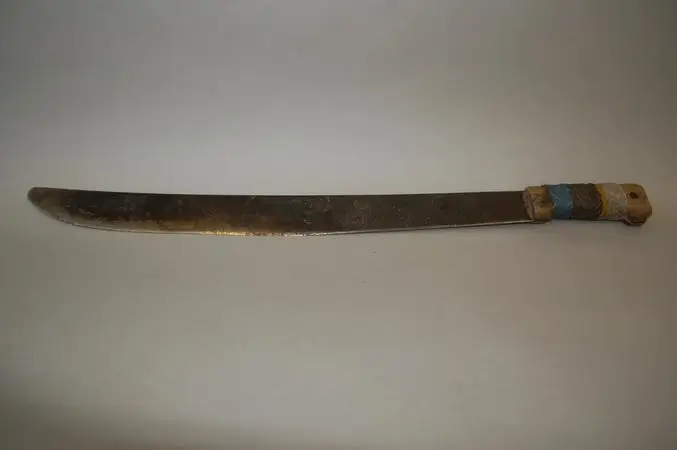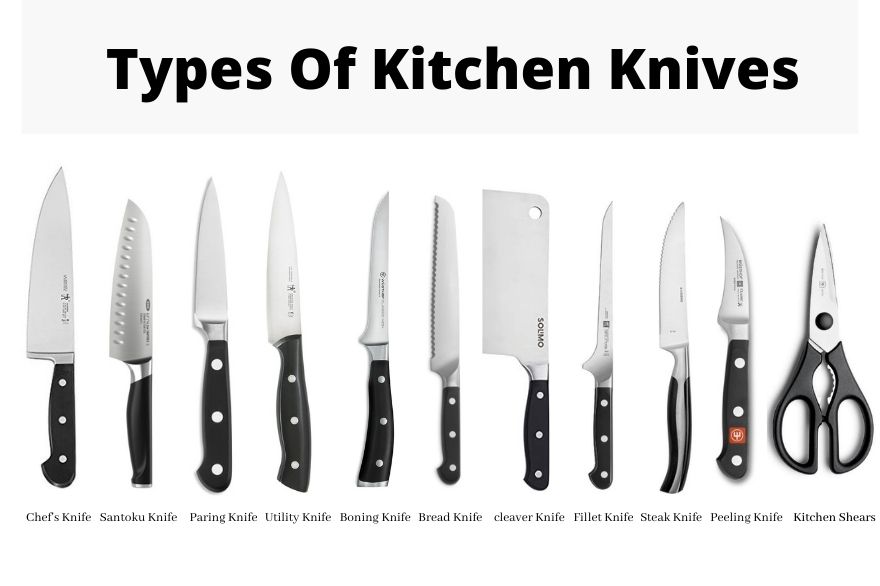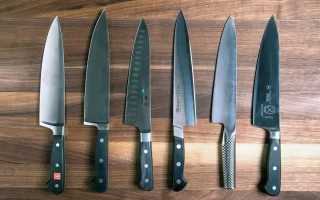The best machete buying guide is here. In this article, we will cover everything from the materials of a machete to which features you should look for when buying one. If you’re an outdoorsman, a machete is your best friend. But with so many different options out there, it can be hard to choose the right one for you. So we created this buying guide to help make that decision easier. Whether it be camping, gardening, or survival, a machete is a great tool to have on hand, only if its a good machete though.
History of the Machete

The machete is a centuries-old tool that has been used in many countries all around the world. Despite its widespread use, there’s no clear origin story for this design – which likely means it had evolved from several designs over time rather than being invented once like other modern knives and swords were created today.
Machetes are a staple of the outdoorsman’s toolkit, and have been used in many parts of Latin America for hundreds if not thousands. The first machete is thought to be made by Spanish tribesmen who re-engineered their quasi-swords into something more appropriate due either personal preference or necessity.
How it got its name
The word machetes can be traced to the Spanish machete, which is turn is a diminutive of macho, a large hammer. So, it literally turns out to mean “a little hammer” although as we know, it’s a large knife. The action of chopping with a blade is similar to the action of using a large hammer so it’s not too unusual to see how this could transfer to the knife itself.
Origin of the design
Prior to 18th Century machetes were only handcrafted from locally available materials such as cane knives (this type had previously seen use among natives around Mississippi River).
Why You Need the Best Machete
Many would agree that the simple machine called wedge is pretty useful in our everyday life. The wedge is the main component of bladed tools. Using a knife or any other similar tool might be such a daily routine for most of us that we no longer think of them. In any case, we still know that we need such tools.
The machete is one of the common bladed tools around. Basically, it is a large knife akin to the cleaver. It may sound exaggerated when a machete enthusiast tells you that the machete is an extremely useful tool. Some might say that if you could only own one blade, then the machete is the best choice. But there’s a reason why there are such fans of the machete. It is indeed a useful tool not only according to enthusiasts but also according to history.
Machetes are primarily used in tropical and subtropical regions for agricultural purposes. They are the tool of choice for sugar cane farmers and the like. But such purposes don’t make machetes popular for the general public. People love machetes because of their versatility. It can be used for a wide variety of tasks.
You can use a machete in preparing food, especially when cutting meat, much like a cleaver. A machete in good condition can efficiently cut meat of large animals. That’s why regular hunters also like to carry a machete. A machete alone can be used for cutting, skinning, and many other tasks in preparing caught game.
Then, there’s the use of machete as a weapon. In several countries throughout the world, the machete has been a popular weapon in uprisings and invasion defense. According to people on the internet, the machete is a good weapon for the “inevitable” zombie apocalypse. It’s up to you if you want to take that last part seriously or not.
Anyway, let’s go back to the topic. The versatility of a machete is owed to its different parts. Each section of the blade caters to different purposes. If the machete has a pointed tip, you can use it for drilling and even opening cans.
Common Machete Uses
There is actually no indication of the parts of the machete, except for the handle and blade. But if you create an imaginary division that separates the sharpened part of the blade into three, you’ll have the top of the blade, the middle, and the bottom. The positions of these parts relative to the handle make each part ideal for different types of tasks.
- The top of the blade is perhaps its primary feature. This is the part used for majority of cutting and chopping tasks.
- The middle is good for chopping game limbs, chopping up tree branches, and slicing meat.
- The bottom part is the easiest to control. You can use it for precise cutting such as sharpening pencils or sticks.
Aside from the sharpened sections, the part of the blade near the handle is blunt. You can use this for hammering certain objects like fire steel and for opening beer bottles. Aside from that, you may adjust your grip to this part so you get better control.
The back of the machete also has many uses. You can scale fish with it or even drive nails. If you need to split some logs, rest the blade on the wood and strike the back with another wood or something similar.
For machetes with a flat top, you can use this part as a makeshift shovel. Or you can flip a meat on the grill with it. Just make sure it’s clean.
The Different Features of a Machete
Machetes pretty much follow a basic build. There are variations, though.
Machetes may be of similar size. After all, if a blade strays too much from the average size, it can no longer be called a machete. However, the size is still an important feature since the even a little difference in size can affect how comfortable it is to use. Size comes in for other considerations as well.
When the size is specified, the measurement of the blade length is considered. The range is between 10 and 28 inches, the average being 18 inches.
Then, there’s the composition of the blade. The two most common material choices are carbon steel and stainless steel. Some are made with a combination of these called high carbon stainless steel.
The tang – the part connecting the machete blade to the handle, extending to the grip – is another important feature. The tang supports the blade so that it won’t easily part from the handle during heavy blows. There are different builds for the tang.
Then, there’s the blade shape or style. Take note, however, that there is no standardization for most blade styles. Some may even use style names interchangeably. You can treat the following list as just a guideline of sorts.
- Bush Machete – shape follows a basic knife, just larger; a general purpose blade.
- Bolo Machete – broader near the tip.
- Barong Machete – leaf-shaped blade.
- Kukri Machete –three distinct sections: pointed tip, wide midsection, and narrow area near the handle.
- Colima Machete – double-edged machete.
- Sable Machete – distinct curved shape, resembling a scimitar.
- Cane Machete – blunt-tipped, sometimes hooked blade.
- Short-handed Sickle – relatively short with an edge-side curve.
- Spear Point Machete – with a piercing point.
- Hawkbill Machete – hooked machete; can be sharpened on both or either side.
Machete handles are also made from different materials.
- Wood
- Molded Plastic
- Stainless Steel
- Rubber
- Leather
- Micarta
Aside from the material, handles differ in style.
- Quillon
- D-Ring/Knuckle Guard
- Crossguard
What to Look for in a Machete – Buying Guide
How do you choose which machete you want? A breakdown of the features mentioned above would be a good start. You want to choose a combination that would suit your purposes.
Blade Length
The blade length is a simple but important consideration, most common range from 10 inches to 28 inches. Which is your priority: portability or reach? Obviously, a longer blade has longer reach. However, it would be harder to transport. A shorter blade would be more portable at the cost of shorter reach. If you don’t really do heavy duty work, then a shorter blade would be practical. Otherwise, you might want to sacrifice convenience for more efficiency. If you want to get a little of both, go for an average blade length.
Blade Material
Blade material has different properties. A carbon steel blade is harder and retains edge sharpness longer compared to stainless steel. It is also cheaper. However, it is prone to rust if not maintained regularly. Sharpening is also more difficult.
Stainless steel resists stain so it requires less maintenance than carbon steel. It is easier to re-sharpen as well. However, it is pretty soft, easy to dull, and more expensive.
High carbon stainless steel combines carbon steel durability and stainless steel rust resistance. But it is even more expensive than the previous two materials. It also has low heat tolerance.
If you want a machete for functional purposes, such as agriculture or survival, carbon steel is more ideal. Stainless steel is better for display purposes. If you are prepared to spend the extra cash, then get a high carbon stainless steel blade to serve both purposes.
Tang
If you will be using the machete for heavy-duty work, like chopping hard wood or slicing large game meat, you want one with a full tang. A full tang extends to the handle’s end with rivets keeping it in place.
Blade Style
For choosing the blade style/shape, your intended use for the machete plays a big part. But as discussed earlier, machetes are generally versatile so you can base your decision on the look.
The bush and bolo machetes are general-purpose tools. The bolo gets a heavier weight distribution towards the top of the blade which aids in stronger chopping blows.
Double-edged machetes, like the Colima and Hawkbill styles, are good for clearing vegetation since you slice on both the forehand and backhand stroke.
Handle Material
Handle material also has advantages and disadvantages over each other.
- Wooden handles are lightweight, provide good grip, and feel warm on the hands. However, they are more expensive. They also require more attention since they are prone to bacteria buildup and cracking due to water exposure.
- Molded plastic handles are easy to maintain and low-priced. They can get slippery though. They may also turn brittle and discolored with time.
- Stainless steel handles look nice and only harbor few bacteria. But they are also slippery and expensive.
- Rubber handles feels comfortable because of good grip and softness. They can get worn easily though.
- Leather handles also provide firm grip. Maintenance is quite tedious though and may get slippery with time.
- Micarta handles have good grip and it is really durable and comfortable. But these qualities come with a high price.
Handle Styles
Handle styles also have different properties.
Quillon handles prevent your hand from slipping towards the blade. But it offers little knuckle or hand protection.
D-ring/Knuckle guard handles give a high level of hand protection and also prevents slipping. The usual problem, though, is that they don’t fit all hand sizes and adds weight to the machete. The same is true for crossguard handles.
Types of Machetes
Among the many machetes in use around the world, some have earned widespread recognition because of their unique shape and versatility. Some are also popular within regions or locals. so let us explore how different types look on a field.
1. Barong Machetes
The Barong machete is a Filipino blade that originated from the Philippines. It’s heavy and leaf-shaped, making this unique type of knife perfect for hacking through jungle vines or other vegetation in areas with tropical rainforests like its namesake suggests.
2. Billhook Machetes
The billhook machete is a tool that has been used for centuries to cut through vines and brambles. The hooked blade, sharpened on the inner curve fits into tight spaces easily while still providing enough leverage when needed with its strong pointy tip designed specifically as an agricultural cutting instrument which can be used both in vineyards or vegetable gardens where there’s many branches coming out at different angles from one another, perfect for pruning them back without damaging sensitive shoots. Bagging Hook, Reaping Hook, Sheaf Hook, and Coa are just a few alternative names.
3. Bolo Machetes
The Bolo machete is a weapon of choice for many Filipinos. The blade has been used in Southeast Asia and the United States, but it’s most famous as an implement carried by indigenous people across Latin America known generically these days simply as “bolo.” This wide-bladed knife can have different types depending on what you want to do with them: one popular jungle model (designed specifically for combat) features heavy metal parts that make up part or all of its functional design elements when compared against lighter versions intended more generally towards camp life tasks like cutting vegetation and hacking away at dead wood.
4. Bowie Machetes
This Bowie machete has been around since the United States, and it’s named after Jim Bowie. Frontiersmen like him have used them to survive against all odds! The blade sports a pointy tip that makes this knife extra-effective in survival situations – no wonder they call these babies “survival knives”.
5. Bush Machetes
The Bush Machete is a type of machete that has been around for centuries. It’s also known as the Latin blade or Collins machetes because they’re made by different brands and have slight variations in design, but it can still be considered one item – with its long blade having little curve at times near tip (which might make this knife less versatile than some other options), straight shape all along towards pointy end which means you’ll find yourself more often using heavier blows rather than slashes when hacking away wood.
6. Cane Machetes
The Cane Machete is a type of knife that typically has an edge closer in appearance to the dull side. The wide, blunt-tipped machetes are perfect for hacking corn stalks and sugar cane; they also make great tools as they’re thin enough cut through both bamboo shoots(rice) or more difficult vegetation such like cotton plants without much difficulty at all.
7. Colima Machetes
The Colima machete is a tool that has been used for centuries in Central America. The blade of this particular machetes are ground on both sides to allow it to make an effective sweeping cut when being swung fore-aft or back-forth, which helps if you’re trying sweep large swaths of vegetation cleanly without having any shakyindallegations from fatigue due its weight distribution towards one side only like most other tools would have done before them.
The origin behind these authentic blades comes primarily out Salamanca Mexico where they were first manufactured as weapons by warriors looking not just inflict pain but also kill with efficiency at close range.
8. Hawkbill Machetes
The curved or hooked machete is a versatile tool in the garden that can be sharpened on both sides of it, as well inside where there’s an arc to its curve. The point of this type focuses more force towards one side making for quicker cuts through tough material while maintaining control and preventing injury when using leverage against those stalks with saw-like teeth like weeds do naturally after being left unchecked over time – just wait until they go germinate. Hawkbill is also known as Cuma machete.
9. Kukri Machetes
The most popular machete is the Kukri A.K.A Gurkha Blade, Rawit. Though its origin hail from Nepal, this day-to-day tool has become an integral part in many countries around the world and comes with some awesome features that other machettes don’t have. Many famous manufacturers make top notch kukris. There’s even a competition amongst them to see who makes better kukri machete. There are many famous manufacturers who make top notch kukris at low prices so any Adventurer out here shouldn’t despair.
10. Panga Machetes
Panga machete are popular in Africa and the Caribbean. They’re a type of slicing blade machete, which means they have deep belly for chopping with their thick curved spine to provide weight when hacking through things like vegetation or animal flesh while also being able to slice after making your initial incision by virtue of its pointy tip that’s designed specifically not only as an edge but more importantly a piercing implement too. Alternative Names: Burriquito, Daga, Liniero, Rozador.
11. Parang Machetes
The parang is a very handy tool that originated from Indonesia. It has been popular all over the world and can be seen in many different forms due to its versatility as well as being able use for various purposes – chopping, hacking or surgery- on either land or sea ships alike! The blade itself is rather long at around 30″ but not nearly enough when compared with other similar types such as golok which reaches up past your head even if leaning against something else (which wouldn’t work). There are several styles made by manufacturers who know this popularity because they’re aware how much people love their products.
12. Heavy Machetes
The workhorse of machetes. The terms “weighted” or “heavy” refers to how the blade is designed, and can be used in many ways depending on your needs for that day – from chopping woody vegetation like bamboo shoots or Oak Tree branches all the way down to thinning out fields with tough weeds.
13. Golok Machetes
The Golok machete is a heavy-duty tool that can be used for chopping and shaping big wooden parts. It originated from South East Asia, but it’s commonly found in Indonesia where the culture considers this as symbol of masculinity due to its similarities with other weapons like Parang or even heavier sabers/knives typically carried by men during Dutch colonial times (especially noticeable if you look at paintings). The blade itself has been interestingly designed so as not only act like an axe while hacking away large trees down into manageable pieces – which would require more strength than what most people actually possess without training techniques such swordsmanship.
14. Traditional Machetes
I’m going to put this under the category of “traditional” machete, but it can also be called a Latin machete or bush blade. This type has an elongated shape with little or no curve until towards its tip which may broaden gradually over time. The blades are usually long and steady enough for most tasks you’ll need them at; they even come in different lengths.
Knivesngear’s Expert Machete Recommendations
You may be wondering what the best machetes are. Well, we have some recommendations for you! Our favorite thing about these blades is they’re all great quality and will get the job done no matter if it’s cutting trees or hacking through brush while hunting animals in an jungle environment like.
1. Condor Tool and Knives Warlock Machete
The Condor Tool and Knives Warlock Machete has a 12-inch blade with a broad top tapering towards the handle.
The manufacturer Condor Tool & Knife has a history dating back to 1787 to the foundation of GEBR WEYESBERG Company. This was in Solingen, Germany. Solingen is titled the cutlery capital of the world.
The blade is made of high carbon steel with epoxy black powder coating finish. The handle is Micarta.
All user reviews of this machete are favorable. Users love how this machete is simple looking yet high functioning.
2. Cold Steel 97KMS Kukri Machete
Cold Steel, a household name among martial artists and knife enthusiasts, teamed up with Maung Gyi, chief instructor of the American Bando Association, to produce this amazing knife. Designed as a self-defense weapon, it has more than everything you need for a long day of camp work or backyard chores.
Kukri’s have a long history of being a great blade. With a fat, heavy belly, it makes chopping easy. The point give you the option of poking and stabbing. The thin section between the belly and handle allows for fine cuts. In total, a Kukri is a great tool to own.
What makes the San Mai Gurkha Kukri different than other Kukris on the market is that it is thicker and heavier at the belly. This gives you more power when chopping. The tool also has VG-1 steel, a high grade tool steel, unlike other machetes who use stainless steel.
3. Bear Grylls Parang Machete *
Let’s start with the Bear Grylls Parang Machete. Named after the Man vs. Wild host/star Bear Grylls, this blade is from Gerber Gear.
Gerber Gear is a knife-manufacturing company founded in 1939. It boasts decades of innovation. The company’s products have a global reach.
The Bear Grylls Parang is a short machete – blade length of 13.5 inches. The design is based on a traditional jungle machete. Blade material is carbon steel. It has a textured rubber grip with full tang construction. The angle of the blade is meant for clearing vegetation.
Users love the look of the Bear Grylls Parang. However, most think that’s all there is to it. With a short blade, it doesn’t reach well. While the blade angle helps with its purpose, the overall build of the Parang makes it lack in heavy-duty work. This machete comes with a great sheath.
4. Woodman’s Pal 2.0 – Multi-Use Axe Machete with Sheath *
Next on the list is the Woodman’s Pal Classic Fixed Blade Machete. This machete is from the Woodman’s Pal product line of Protool Industries.
Protool Industries take pride in manufacturing products right in the USA. They claim to make sure to use only the best raw materials and handcraft tools one at a time.
The Woodman’s Pal is another short-bladed machete at only 10.5 inches. The primarily noticeable feature is its shape. It has a high carbon steel blade.
User reception of this machete is generally favorable. The description says that it can be used as different tools. User reports support this claim as the Woodman’s Pal can be used as an axe, hatchet, camp knife, hammer, and many more.
Lansky Dual Grit Machete Sharpener
A machete is one of the most versatile tools in a hunter’s kit. It can be used to clear brush, cut down tree limbs and vines, saw through bone and meat, and even fend off wild animals. The blade needs to be sharpened regularly so that it continues to stay effective for all of these tasks. There are many different types of grits available on the market today; some people prefer diamond or ceramic stones while others swear by sandpaper or emery cloth. But i prefer Lansky Dual Grit. For $7, the Lansky dual grit sharpener is the perfect tool for sharpening machetes, lawn mower blades, knives, axes, hatchets, or any other blade. As a 3″ round puck, the tool has two grades, one on each side. This allows for great control no matter the position.
Notable Machete Manufacturers
- Cold Steel
- Condor Tool and Knives
- Gerber
- Ontario Knife Company
Conclusion
The basic design of the machete gives it supreme versatility. However, not all machetes are created equal. If you decide to get one, be sure to check out the features and consult user reviews so you choose more carefully. You’d surely get a great machete.

Hi, my name is Taras Kulakov and I’m a knife enthusiast. I have been collecting knives for over 30 years and I’ve owned literally thousands of different models over that time. My goal with this site is to share some of what I’ve learned about knives. You can find more info about Taras Kulakov here.




